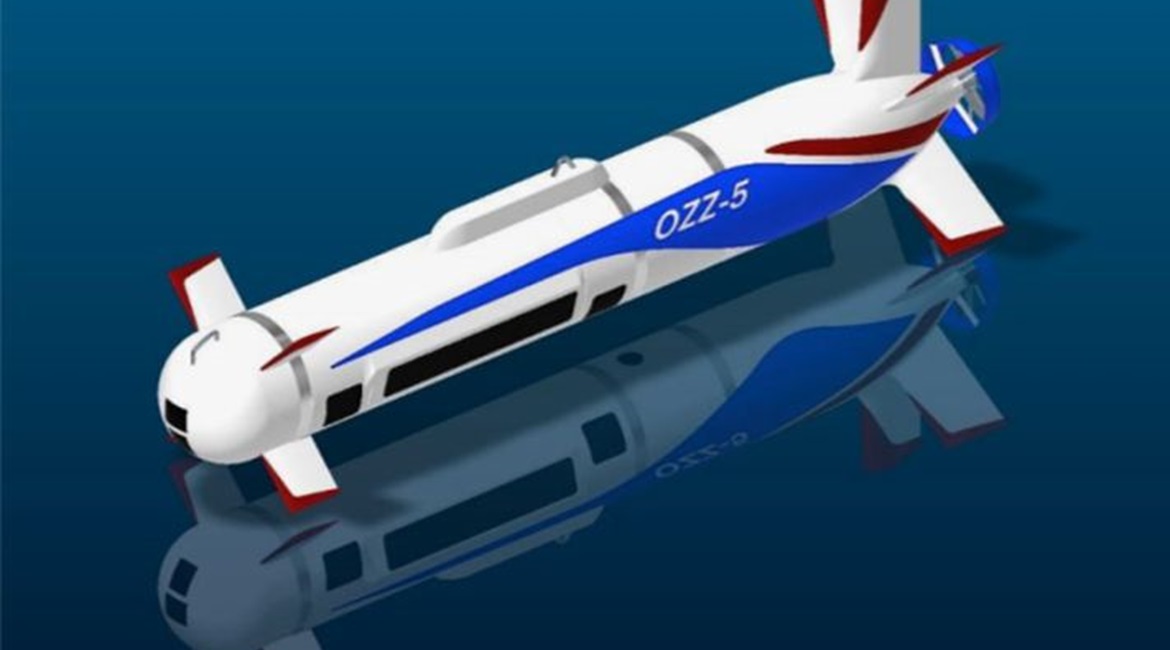
Japan’s Mitsubishi Heavy Industries (MHI) announced on 30 March that it has signed a research and prototype production contract with Japan’s Ministry of Defense (MoD) as part of a five-year French-Japanese project aimed at enhancing the capabilities of autonomous underwater vehicles (AUVs) used for mine countermeasure (MCM) operations.
The project, which follows the signing of the defence co-operation agreement between Direction Générale de l’Armement (DGA – France’s defence procurement agency) – and Japan’s Acquisition, Technology & Logistics Agency (ATLA), will see MHI and Thales work together on the design, development, integration, and testing of dual-frequency, synthetic-aperture, sonar-processing technology for use on MCM-specialised AUVs.

A computer-generated image of MHI’s OZZ-5 autonomous underwater mine countermeasure vehicle. (MHI)
Once completed, the improved autonomous MCM system is expected to be capable of detecting, classifying, and localising all types of mines, including bottom-laid, semi- or fully-buried mines, without being subject to conditions underwater, said Thales in a statement, adding that DGA and ATLA decided to co-operate in this project “in response to the growing threat” posed by mines in coastal areas.
The project aims to combine the low-frequency synthetic aperture sonar mounted on MHI’s OZZ-5 MCM AUV with Thales’ latest high-frequency synthetic aperture sonar – SAMDIS – and, by enhancing the precision of the automatic detection and classification function together with signal processing technology development, achieve synthetic aperture signal processing in real time.
“The smart integration of the high-frequency and low-frequency sonars, coupled with a combined automatic detection and classification function, will not only provide capability and performance enhancement into a single solution but will also mutually benefit each sonar’s processing and imaging,” said Thales.
According to ATLA documents obtained by Janes
Looking to read the full article?
Gain unlimited access to Janes news and more...